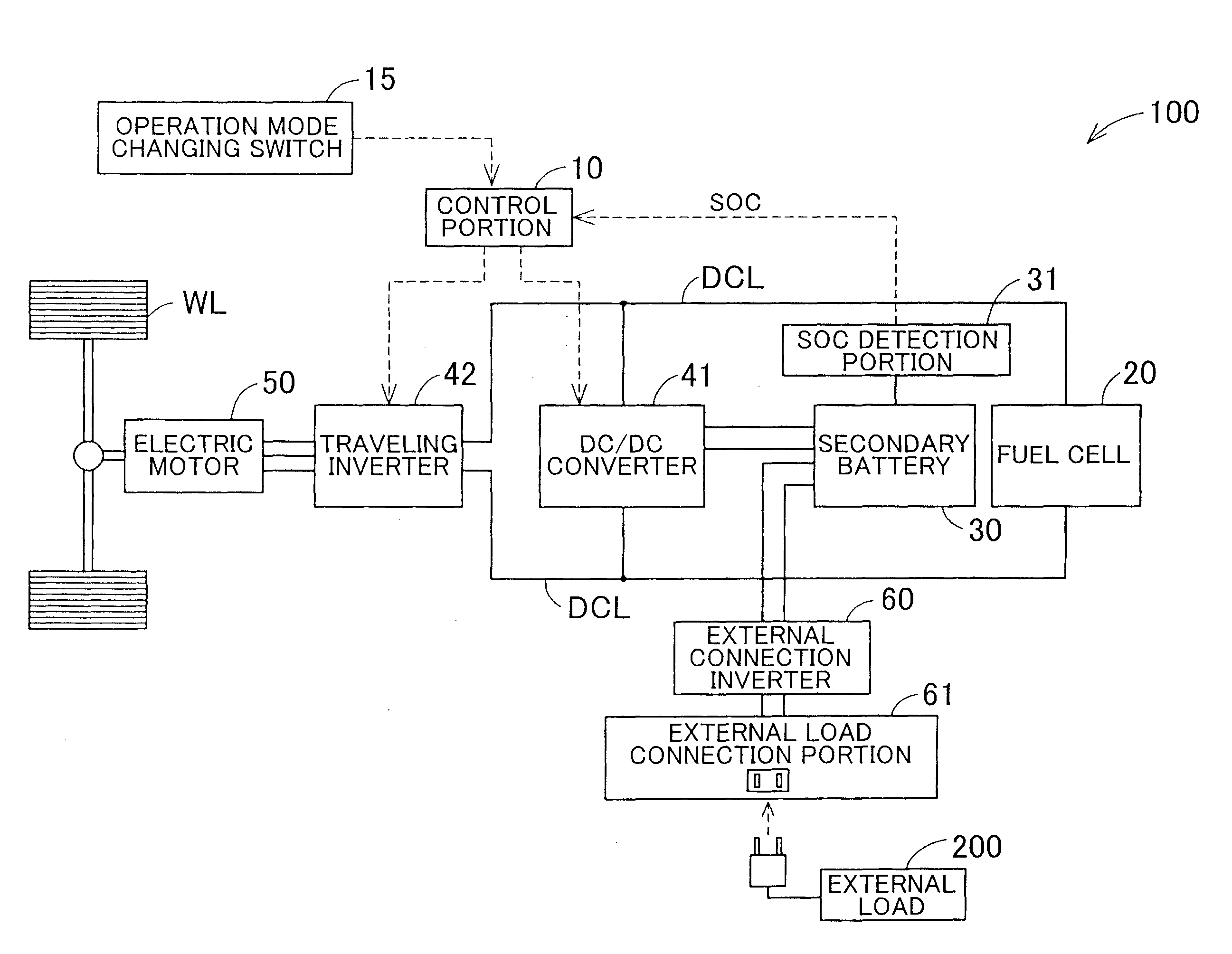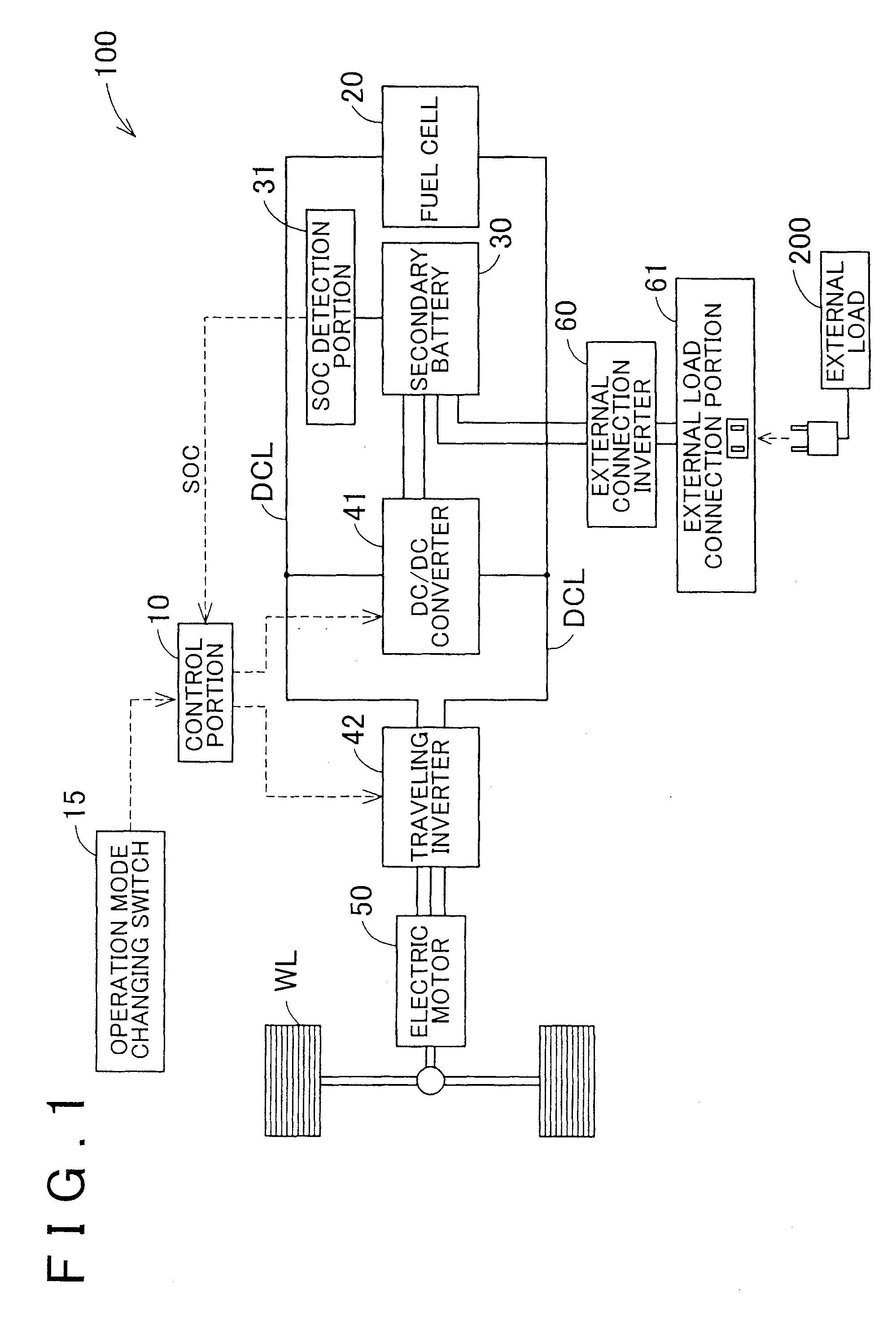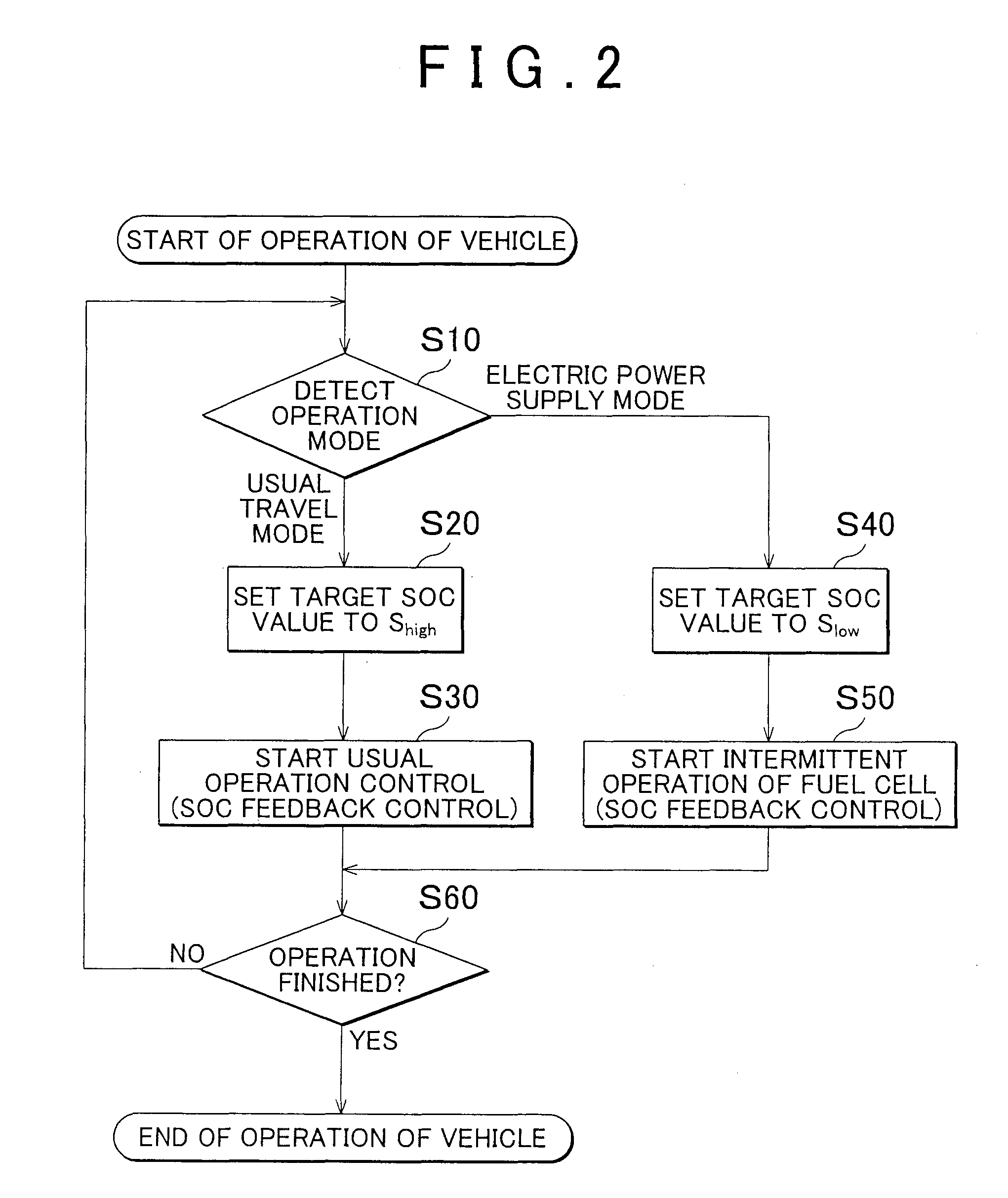Vehicle including secondary battery and control method for vehicle including secondary battery
a technology for vehicles and secondary batteries, applied in battery/fuel cell control arrangements, process and machine control, instruments, etc., can solve problems such as electricity generation, and achieve the effect of efficient supply of electric power
- Summary
- Abstract
- Description
- Claims
- Application Information
AI Technical Summary
Benefits of technology
Problems solved by technology
Method used
Image
Examples
first embodiment
A. First Embodiment
[0022]FIG. 1 is a schematic diagram showing a configuration of a fuel cell vehicle 100 in accordance with a first embodiment of the invention. The fuel cell vehicle 100 includes a fuel cell 20 and a secondary battery 30, and travels by using electric power from the fuel cell 20 and the secondary battery 30 as drive power. The fuel cell vehicle 100 in accordance with the embodiment is capable of functioning as a mobile electric power supply apparatus that supplies electric power to an external load 200 when the fuel cell vehicle 100 is in a stopped state. Concretely, the fuel cell vehicle 100 has a configuration as follows.
[0023]The fuel cell 20 is a solid polymer fuel cell that receives hydrogen and air as reaction gases, and generates electric power. The secondary battery 30 may be constituted by, for example, a lithium-ion battery. The fuel cell 20 and the secondary battery 30 are not limited to solid polymer fuel cells and lithium-ion batteries, respectively, a...
second embodiment
B. Second Embodiment
[0053]FIG. 7 is a schematic diagram showing a configuration of a fuel cell vehicle 100A according to a second embodiment of the invention. FIG. 7 is substantially the same as FIG. 1, except that an inverter output detection portion 63 is provided. The inverter output detection portion 63 acquires or detects the inverter output of the external connection inverter 60 (i.e., electric power supplied to the external load 200) by detecting the value of current and the value of voltage between the external connection inverter 60 and the external load connection portion 61.
[0054]In the fuel cell vehicle 100A of the second embodiment, the control portion 10 executes an SOC feedback control for the secondary battery 30 by making the target SOC value during the electric power supply mode different from the target SOC value during the usual travel mode (FIG. 2), similarly to the fuel cell vehicle 100 in the first embodiment. However, in the fuel cell vehicle 100A of the seco...
first modification
C1. First Modification
[0060]In the foregoing embodiments, the upper limit value of the amount of electricity stored in the secondary battery 30 during the electric power supply mode is made different from that during the usual travel mode, by setting the target SOC value used in the SOC feedback control for the secondary battery 30 during the usual travel mode and the target SOC value during the electric power supply mode to different values. The usual travel mode and the electric power supply mode and are operation modes that are preliminarily set. However, the operation modes do not necessarily need to be preliminarily set in the fuel cell vehicles 100 and 100A, and the change in the upper limit value of the amount of electricity stored in the secondary battery 30 does not necessarily need to be based on the operation mode, as long as in the fuel cell vehicles 100 and 100A, the amount of electricity stored in the secondary battery 30 is controlled in such a manner that when electr...
PUM
 Login to View More
Login to View More Abstract
Description
Claims
Application Information
 Login to View More
Login to View More - R&D
- Intellectual Property
- Life Sciences
- Materials
- Tech Scout
- Unparalleled Data Quality
- Higher Quality Content
- 60% Fewer Hallucinations
Browse by: Latest US Patents, China's latest patents, Technical Efficacy Thesaurus, Application Domain, Technology Topic, Popular Technical Reports.
© 2025 PatSnap. All rights reserved.Legal|Privacy policy|Modern Slavery Act Transparency Statement|Sitemap|About US| Contact US: help@patsnap.com



